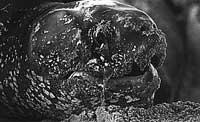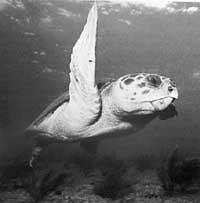Magnetic fields, animal compass
2001/12/16 Mendiburu, Joana - Elhuyar Zientziaren Komunikazioa
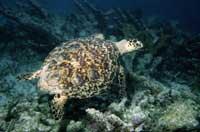
Animals do not have the means of transport that we have humans, nor technology, but neither need! Without planes, trains, cars and compass, they have much more capacity than humans to move around the world. For this, like many other things, there is nothing better than what is necessary.
Migration is usually carried out by animals unable to cope with the changes that occur from one station to another. Species capable of hibernating do not usually need to move to another more temperate place to spend the winter with the arrival of autumn. But those who are unable to do so know that, unless they want to die cold or hungry, it is better to escape before they enter winter.
Many animals can't resist the cold winter or the Sargoríes calos de verano and those temperature changes lead them to migrate. In other cases, food shortages are the main cause of migration. However, food shortages are closely related to climate change, and therefore migrations are cyclical phenomena.
But there is also another reason that obliges some species to migrate. Several species travel thousands of kilometers tired in search of the best conditions to reproduce. For example, the turtle Caretta Caretta, which has fascinated researchers.
Swimming if not flying or on foot
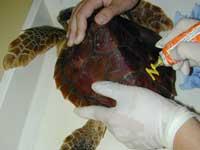
The main aquatic migrant known in our environment is salmon. After a cut in summer due to low water flows, in autumn salmon take the way up to the river. Usually there are some references to the state of the rivers of Euskal Herria, although unfortunately the short-term memory remains on the surface.
But there are other migrants who swim like salmon, like the turtle Caretta caretta, with its beaches of Florida and its residence in the rich marine currents. When newborn turtles learn to walk they begin the long adventure of crossing the Atlantic. But, how can we be able to cross the Atlantic in the newborn, without help and without losing the way? This question has been the starting point of Kenneth Lohmann's research.
Newborn turtles, the marine map, the GPS and without anyone's help, initiate one of the longest migrations that are known. They head north of the beaches of Florida and identify the temperate current of the North Atlantic and head east. The total route is about 12,000 kilometers. In this current, the water has a fairly temperate temperature and there are many foods. Apart from this current, turtles should endure excessively severe conditions: waters at low temperatures and food shortages.
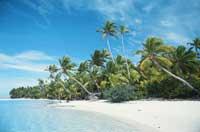
Previous studies showed that turtles are able to identify the characteristics of magnetic fields. Among them stand out the inclination and the intensity. But it remained to explain how the system works based on terrestrial magnetism. The main contribution of the final research has, therefore, been the demonstration that the road to home is possible thanks to this mechanism.
Researchers at the University of North Carolina explained in the journal Science that turtles "understand general magnetism and know the magnetic fields". This natural compass is necessary to know currents like that of the North Atlantic.
To investigate the influence of currents and electromagnetic fields turtles dressed in a "bathing suit" connected to a computer were used. Then, they entered the pool and thanks to an electric coil, they created magnetic fields similar to those of the sea to see the direction of the turtles. Specifically, they created magnetic fields on the coast of Florida, the North Atlantic tour and Portugal, of particular importance in their trajectory.
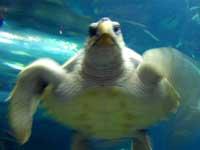
Most of the 79 turtle children who participated in the experience that smoothly passed the test with magnetic fields. If they were at sea, the course adopted would take them directly to the place of residence. However, according to scientists, the mechanism of turtles is not perfect and, as happens in the sea, in the pool there are also turtles that are too far from the straight line.
But the work of scientists is not limited to this experience. In the report presented, researcher Pavel Nemec of the Charles Universe of Prague has identified the area that processes information of magnetic fields in the mammal brain. Therefore, they do not rule out that other migratory species use the same mechanism to avoid getting lost along the way. For example, the compass of dolphins, whales, tunas and even birds let us think that they are magnetic fields, although still to be demonstrated.
Exhibition on the turtle in the Aquarium of San Sebastián
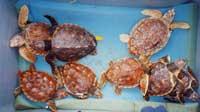
The offspring of the species Caretta caretta are, therefore, capable of carrying out a long journey with great precision. However, this capacity is not enough to ensure the survival of the species if it is not able to cope with the obstacles that the human being causes and all kinds of pollution. The destruction of the coast, the chemical discharges, the thousands of plastic residues that ingest like algae and the fishing with the shape of a longline have endangered the extinction of this species.
Just for this fishing, every year more than 40,000 turtles die in the world. Therefore, it is necessary to protect and help as much as possible to this species. Donostiarras biologists work on it in the last ten years. The turtles found in a lamentable situation by fishermen or by the general public are carried and guarded in the Aquarium until they are strengthened and completed to resume the trip.
But the Aquarium of San Sebastian is not the only refuge for the turtles of the Atlantic coast. In Biarritz and La Rochelle are also collected turtles every year. The collaboration between the three centers is good and among them is being carried out a program of protection of the turtle. Following the initiative of the aquarium of La Rochelle, turtles are released together every spring. Before unmasking, with the characteristics of each turtle (weight, age, location, etc.) They place a tape to know where the turtle goes.
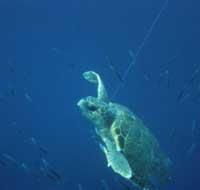
However, although this work is interesting and positive, biologist Xabier Ginda has clear that his work is not enough during fishing. They know that they will not be able to save the species, but at least it serves to raise awareness to the people and the biologists of the aquarium are satisfied.
If you want to know all this live you don't have to go far. In addition to the exhibition that will remain open until March and that approaches the Aquarium of San Sebastian, you can see live the turtles. Learn a lot!
Published in the supplement Natura de Gara.

Gai honi buruzko eduki gehiago
Elhuyarrek garatutako teknologia




